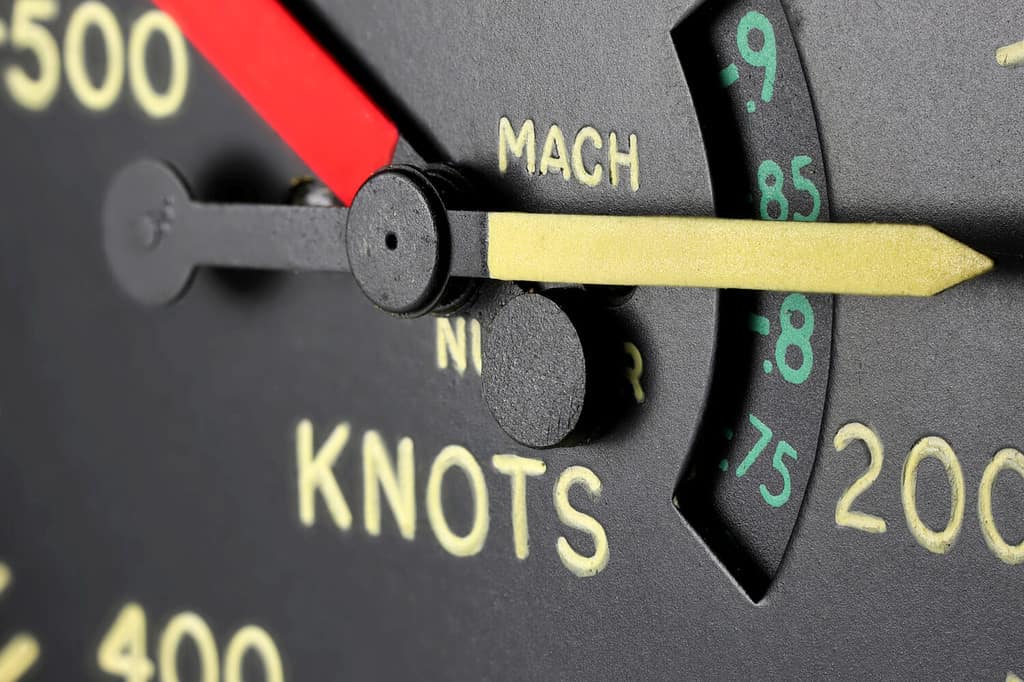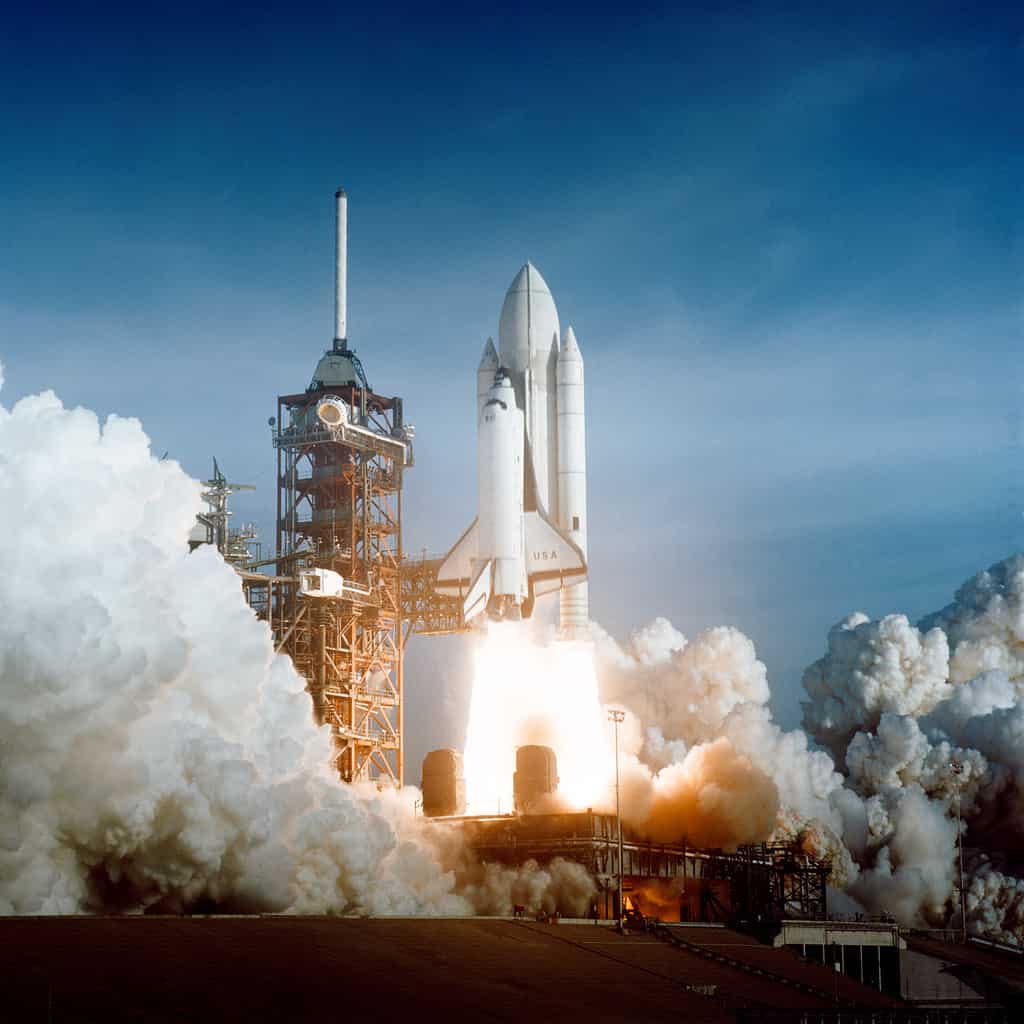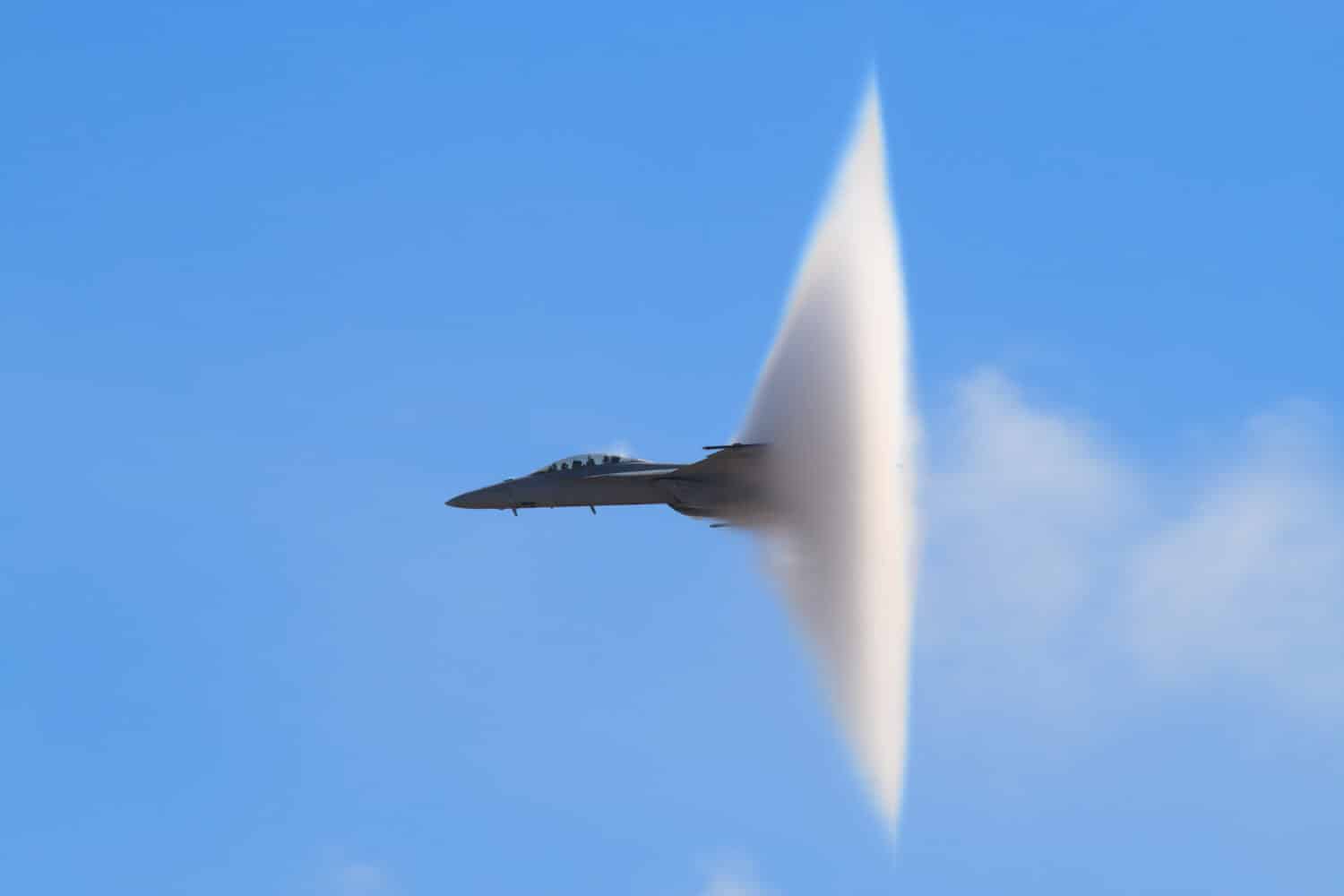Supersonic speeds are exciting to hear and read about, but they are also just a marvel to imagine! Humans have created machines that allow us to travel at incredible speeds, some of which travel faster than sound through air itself. Today, we are going to take a look at Mach 3, one of the integers of Mach speeds, in order to find out how fast Mach 3 is. We will also learn about some related vehicles and objects and see how they measure up to Mach 3’s impressive speeds. Let’s get started!
How Fast is Mach 3?

In most situations, Mach 3 is clocked at 2,301 mph.
©Bjoern Wylezich/Shutterstock.com
Mach 3 is 2,301 mph, 3,378 feet per second, or three times the speed of sound.
Mach 3 is a term that describes the speed of an object or a fluid relative to the speed of sound. The speed of sound does vary slightly, depending on the temperature and pressure involved. In most situations, the “standard” is referring to dry air at sea level and 68°F, giving us a standard speed of sound at about 767 miles per hour, or 1,126 feet per second. Mach 1 is the speed of sound, so Mach 3 would be three times the speed of sound.
With that math, Mach 3 means that an object or a fluid is moving at three times the speed of sound in those conditions, which is about 2,301 miles per hour or 3,378 feet per second. For reference, Mach 3 is faster than the cruising speed of most commercial jets, which is around Mach 0.8.
Why is it Named “Mach”?
You might be wondering why we use the term “Mach” to describe the speed of sound and its multiples. It’s actually a tribute to a scientist named Ernst Mach, who lived in Austria more than a century ago. He was fascinated by how things move faster than sound, like bullets and rockets, and how they create loud noises and shock waves in the air.
His work inspired many other scientists and engineers who wanted to understand and design supersonic vehicles. One of them was Jakob Ackeret, a Swiss scientist who invented the Mach number in 1929. Ackeret thought it would be useful to have a simple way to compare the speed of something to the speed of sound in the same environment. The Mach number is just that: a number that tells you how many times faster (or slower) something is moving than sound. It doesn’t matter what units you use as long as you use the same ones for both speeds.
How and Why is Mach Used?
Mach number is very useful for analyzing how fluids behave when they move very fast or when they change their density. The Mach number also helps us calculate things like pressure, temperature, and force in fluid, particularly between various mediums. For example, the Mach speed in most water is 3,315 mph, almost 5x faster than in dry 68°F air.
This is important for studying the motion of rockets and planes, which can travel faster than sound and create shock waves and sonic booms. Also, the Mach speed is useful for understanding and measuring concepts like compression, an important variable in fluid dynamics.
Comparable Speeds of Common Objects in Mach Terms

Bullet trains are one of the fastest commercial vehicles in the world.
©Steve Allen/Shutterstock.com
You might be curious about how fast some common objects are in Mach terms. Here are some examples of different speeds and their Mach equivalents.
Boeing 747
A Boeing 747 is one of the most popular commercial planes in the world, with a top speed of about 614 mph. That’s equivalent to about Mach 0.8. Since a plane has to deal with a lot of wind resistance and drag, going up to 30,000 feet helps it to travel faster while also making it easier to break the sound barrier since the air is thinner.
Bugatti Chiron
A Bugatti Chiron is one of the fastest supercars in the world, and it has a top speed of about 261 mph. That’s equivalent to about Mach 0.34. Other supercars with similar speeds will have similar Mach speeds, although none of them compete with the fastest land vehicle ever built (check it out below).
Rifle Bullet
A rifle bullet can travel at different speeds depending on the type of gun and ammunition, but an average speed is around 1,700 mph. That’s equivalent to about Mach 2.2. Generally speaking, adding additional gunpowder without increasing the mass of a bullet will increase the speed of a gun. Part of the reason that guns are so loud is that they break the sound barrier!
Bullet Train
A high-speed train can vary in speed depending on the country and the technology, but the average speed for a bullet train in Japan is around 200 mph. That’s equivalent to about Mach 0.26.
Running
An average runner can run at different speeds depending on their fitness and endurance, but an average speed is around 10 mph. That’s equivalent to about Mach 0.01. The next time you go on a run, you can claim to be running at 1/100th the speed of sound. Even Usain Bolt can’t get close to breaking the sound barrier.
What is the Fastest Humans Can Travel (in Mach Terms)?

The fastest a human ever traveled was during the Apollo 10 mission to the moon and back.
Land
The fastest land vehicle ever built is the Thrust SSC, a jet-powered car that broke the sound barrier in 1997. It holds an unbeaten record for the world’s fastest land vehicle, with an average speed of 763 mph. That’s equivalent to about Mach 1.02! The driver of Thrust SSC was Andy Green, a former British Royal Air Force pilot.
Air
The fastest aircraft ever built is the North American X-15, a rocket-powered plane that flew at the edge of space in the 1960s. It holds an unbeaten record for the world’s fastest manned aircraft, with a top speed of 4,520 mph, which is equal to about Mach 6.7. The X-15 looks more like a missile than a plane, and it also had to be launched from a B-52 bomber.
The fastest “air-breathing” manned aircraft, meaning it uses jet engines and not rockets, is the Lockheed SR-71 Blackbird, a spy plane from the Cold War era. It holds an official record for the world’s fastest air-breathing manned aircraft, with a top speed of 2,193 mph, or Mach 3.3.
The fastest civilian aircraft ever built is the retired Concorde supersonic jet. It was one of the only two supersonic passenger planes that ever flew commercially. The Concorde had a top speed of 1,354 mph. It could fly from London to New York in less than four hours, half the time of a normal airplane today.
Space
When it comes to supersonic speeds, the fastest speeds are almost always going to be in space. Space has no air, which subsequently means there is no sound. Still, if you take the relative speed of a spacecraft and use the standard Mach speed in dry air, we can easily divide and come to a number.
The fastest spacecraft (and general “thing”) that humans have ever traveled in was a spacecraft that went to the Moon and back. The record for the fastest human spaceflight was set by the crew of NASA’s Apollo 10 mission in 1969. They reached a staggering speed of 24,791 mph (relative to Earth) as they came back from orbiting the Moon. That’s the fastest any human beings have ever traveled, and it’s equivalent to about Mach 32.5! That means they were moving at more than 32 times the speed of sound in Earth’s atmosphere. To put that into perspective, that’s faster than a bullet fired from a rifle, which travels at about Mach 2.5.
Thank you for reading! Have some feedback for us? Contact the AZ Animals editorial team.








